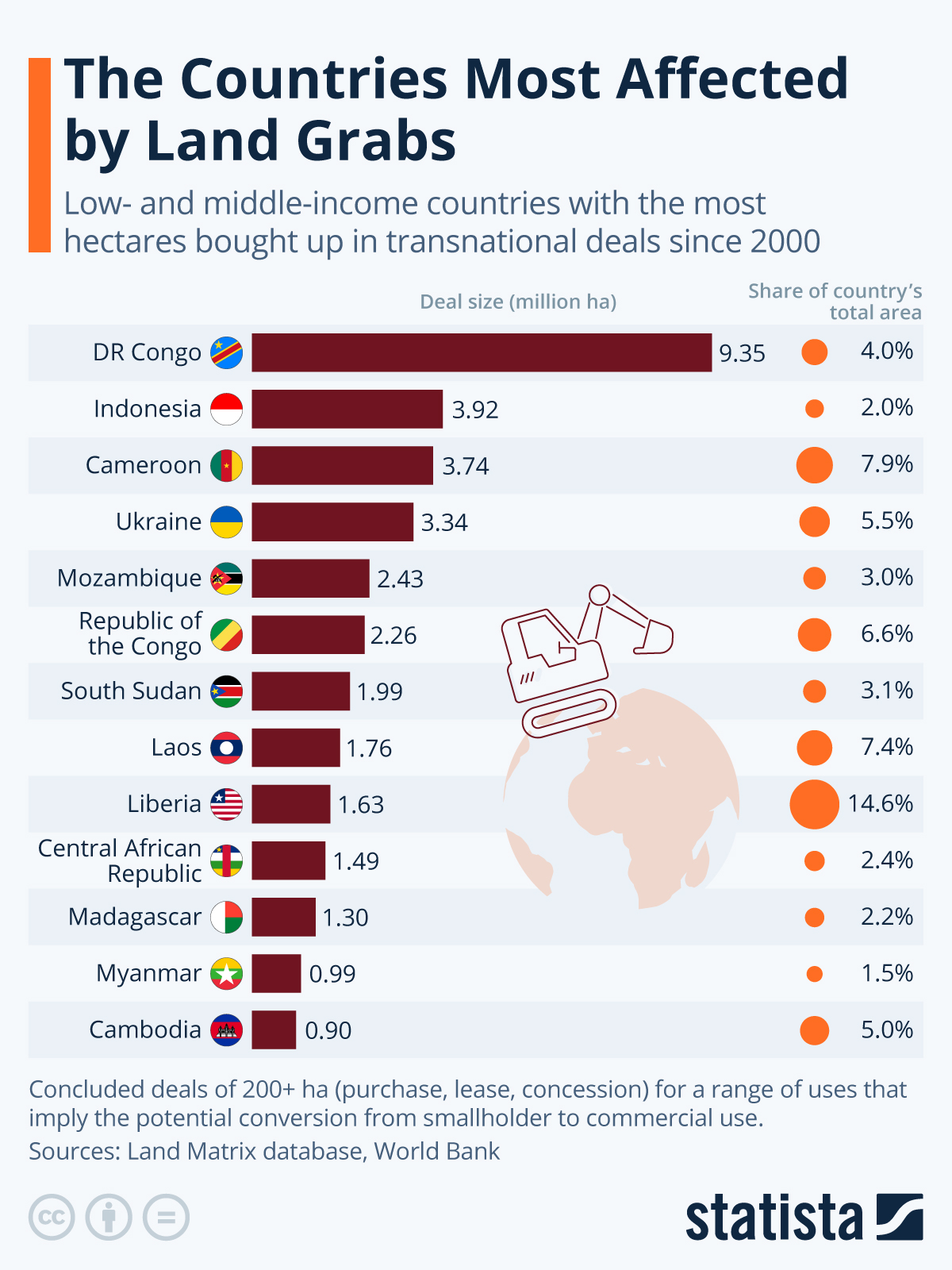According to an analysis of the Land Matrix database, the Democratic Republic of the Congo is the country most heavily affected by land grabs, defined as the buying, leasing or concession land use for commercial purposes by companies from abroad, affecting land that had previously been used communally, by small-scale shareholders or was natural environment.
Since the year 2000, deals for the purchase or use of more than 9 million hectares of land have been closed in the country, affecting approximately 4 percent of its landmass. Foreign investors in the DRC have been reported to buy land for agricultural use, but also for the use in carbon trading schemes. The country that is rich in natural rain forest has seen allegations recently that its government was complicit in the facilitation of land grabbing for such a purpose. African countries appear frequently in the database, with Cameroon, the Republic of the Congo and Liberia seeing comparably large shares of their territories changing hands.
Previous to the Russian invasion, Ukraine also saw a lot of foreign investors and user converting areas for large scale agricultural projects - a legacy of Soviet times when the breadbasket country started to engage in large-scale farming that is concentrating in the hands of a powerful and well-connected few. Land deals encompass more than 3 million hectares, making up 5.5 percent of Ukraine's landmass.
As of 2019, Peru had been the country where the biggest land grabs had taken place, with just over 16 million hectares ceded over the past twenty years, largely intended for mining. The country was reclassified as an upper-middle income country since then and therefore exited the scope of the Land Matrix analysis.





















